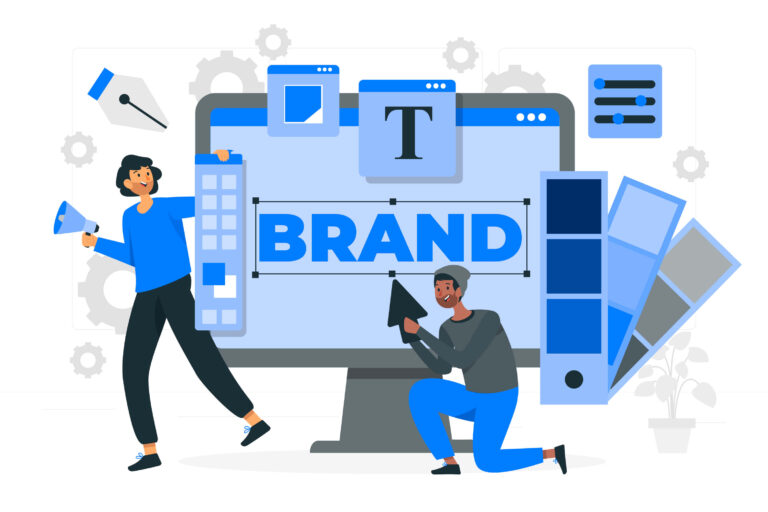The Branding Secret Most Investors Won’t Tell You
Companies meticulously measure and optimize the value derived from physical assets – equipment, real estate, inventory and the like. They also measure and value creation of software, platforms and products as well. But what about harder to quantify intangible assets like brand identity, trust and customer relationships? These powerful drivers of decisions and loyalty hold tremendous financial value worth that investors rarely talk about.
Consumers don’t know employee count or revenue metrics – just the perception you convey. Renowned brands accrue such trust, credibility and positive associations.
A brand that delivers value drives value – but many organizations struggle to connect the dots between branding KPIs and hard business outcomes. Rather than accept branding as an unknowable black box, data-driven frameworks exist to meaningfully value consumer sentiment as an asset.
Here are 4 critical barometers to continually gauge the financial worth cultivated by branding efforts:
- Brand Funnel Movement – Analyzing conversion rates from awareness to consideration through retention spotlights where branding builds or depletes enterprise value across the journey.
- Willingness to Pay – Will your customers pay more for your branded offering than an equivalent unbranded product? Price premium metrics make this real.
- Referral Intent – How often do customers actively refer others based on affinity for your brand? Referral rates document emotional connections.
- Replay Buying – Tracking repurchase intent and behavior over time quantifies brand loyalty and lifetime value in cash terms.
What gets measured gets managed. Without ongoing brand equity tracking, you risk nasty surprises and inability to quantify impact. Monitoring key benchmarks makes trademark equity visible on the balance sheet and actionable in the boardroom. Consistent tracking preserves brand value as an invisible asset from erosion.
But How Do You Track Brand Equity:
Here are some key ways to track brand equity:
- Market Share Analysis: Examining your brand’s share of the total market, and how it compares to competitors, gives you an understanding of where there are opportunities for growth. Tracking this over time shows momentum and impact of marketing efforts. Use surveys to complement share data with consumer preferences.
- Audience Insights: Diving deep into your existing and potential target audience using demographic, psychographic and behavioral data reveals what they will meaningfully connect with. Statistical modeling helps determine number of potential customers, lifetime value, price sensitivity and more.
- Perception Tracking: Beyond how many customers you have, it’s crucial to measure how your brand is perceived. Brand studies assessing attributes like quality, value, differentiation and emotional benefits provide numerical insight into strengths, weaknesses and optimal positioning.
- Journey Mapping: Identifying each touchpoint along the customer journey, and quantifying interactions, allows you to see where your brand over or under indexes. Review heat maps and impact ratios to see where you deliver or fall short of expectations at each step.
- Brand Asset Valuator: Developed by Young & Rubicam, this model gives brands a score across four dimensions: Differentiation, Relevance, Esteem, and Knowledge. Scores are based on consumer surveys. By benchmarking against competitors and tracking over time, you get a KPI for brand value.
- Interbrand: Interbrand’s brand valuation methodology analyzes a brand’s financial performance, role in purchase decision making, and competitive strength to quantify brand value. This produces a dollar figure that allows for apples-to-apples comparisons across brands and industries.
- BrandZ: Top 100 Financial Times and WPP annually rank the world’s most valuable brands based on financial metrics, category splits, and a brand’s ability to stand out. The numerical brand value estimate lets you know where you stand globally.
- Custom Brand Equity Scorecards: You can also create a custom index using metrics like brand awareness, consideration, repeat purchase rates, willingness to pay a premium, and other loyalty indicators specific to your brand. Track this scorecard over time.
While branding remains both a science and an art, applying numeric frameworks removes subjectivity and provides an essential fact base to set direction. By regularly analyzing these datasets, you can objectively and numerically optimize brand equity, and pivot when metrics indicate an adjustment is needed. The numbers show the way to build brands that authentically and uniquely resonate in the hearts and minds of customers.
Relying on data over hunches takes the magic out of branding, but the payoff can be huge for organizations willing to let the numbers guide strategic branding decisions
Regularly valuing your brand empowers you to make strategic decisions on everything from marketing budgets to product development pipelines. It enables data-informed responses when brand value shifts occur.
3 Brutal Signs You Need a Branding Makeover (Before It’s Too Late)
Is your branding still accurately representing your company this year? Outdated branding not only looks stale, but it can actively deter prospects and customers. Here are 3 telltale indicators that it may be time for a complete rebrand:
🚩 Your logo screams “generic!”: Crafting a vibrant visual identity matters more than ever, yet your logo could be easily confused for dozens of competitors. Lacking a distinctive look makes gaining awareness and customer loyalty an uphill battle in crowded markets.
🚩Your messaging only resonates with a niche audience: Oftentimes, companies evolve and expand over the years, yet branding remains trapped targeting a narrow segment. If your messaging seems more irrelevant by the day, an overhaul aligned to new customers is essential.
🚩Your aesthetics are stuck in the past decade: A recent makeover was likely great…10 years ago. But modern buyers expect sleek and contemporary aesthetics reflecting the latest design trends. Dusty, dated branding conveys staleness not on trend with today’s pace.
Outgrowing ineffective branding is no small pivot, but when the signs point to an outdated identity, a transformational rebrand may provide the momentum to propel sustainable growth into the next era.
It’s only too late when the damage of an irrelevant brand perception starts impacting the bottom line – don’t let it get that far.
5 Branding Sins That Kill Startups Before They Fly
Launching a startup takes immense vision, passion, and commitment. But many founders trip up on avoidable branding mistakes in those early stages – costing valuable momentum. Having helped position dozens of early stage companies, here are 5 lethal branding sins I frequently see send startups back to the drawing board:
- ☠️ Forcing a Cheesy Name: Clever names can stick, but one that elicits eye-rolls due to trying too hard defeats its purpose.
- ☠️ DIY Logos Gone Wrong: Cookie-cutter logos scream amateur hour. A generic identity harms perception from Day 1.
- ☠️ Dated Visual Aesthetics: In 2024 and beyond, modern and sleek is expected. Dusty, busy designs communicate the wrong message.
- ☠️ Targeting Everyone & No One: Being all things to all people never succeeds. Ruthlessly focusing your branding is non-negotiable.
- ☠️ Launching a Brand in Stealth Mode: You can’t build awareness in shadows. Emerging proudly and loudly (with a narrative) is critical.
Of course no startup brand will be perfect from inception. But avoiding these obvious pitfalls gives you the best chance to convincingly communicate vision and forge those critical early connections.
How to FAST TRACK branding:
- Tell a Damn Good Story: Start with your “why“. What problem are you crushing? Why does it matter? Airbnb wasn’t about beds; it was about belonging. Craft your narrative with clarity, authenticity, and a dash of magic. People connect with stories, so give them one they’ll never forget.
- Look Good, Stay Consistent: Your brand’s your face, your handshake, your first impression. Make it count! Develop a clear visual identity – logo, colors, fonts – and wield it like a samurai sword. Consistency builds trust and recognition, so be the friend with the unforgettable style.
- Rock Social Media: Ditch the cat videos! Instead connect, engage, and provide value on Social Media. Share your journey, showcase your values, and be the real you online. Authenticity is what attracts, so ditch the filters and let your brand personality shine like a disco ball.
- Team Power: Your employees aren’t just cogs in the machine; they’re your brand evangelists. Invest in programs that make them believe in your mission and live your brand values. Happy employees = happy customers = happy investors. Remember, your brand is only as strong as the people behind it.





